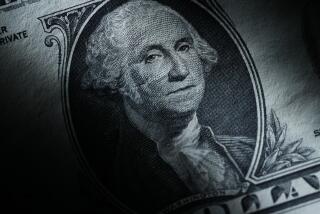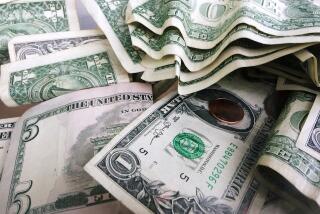Going Out of State for High Yield Can Be Easy
- Share via
Many newspapers, including The Times, publish lists of the highest-yielding savings accounts nationwide. But getting one of these accounts is an unfamiliar--even intimidating--process for many savers.
That’s because many of the banks and thrifts listed are far away. Most of us know how to deal with people at local institutions, but sending money by mail or wire--that’s tricky, we think.
Fortunately, the process--although requiring care--is not difficult. And it can be well worth it.
Highest-yielding accounts usually pay 1 to 3 percentage points more than the national average, says Hugo H. Ottolenghi, editor of 100 Highest Yields, a North Palm Beach, Fla., newsletter that provides listings for The Times. For example, Ottolenghi says, the nation’s highest-yielding money market deposit account, at Blackstone Bank & Trust in Boston, pays 8.33%, versus the national average of only 6.21%.
If you don’t think that’s a big deal, note that for each $10,000 on deposit, a percentage point gain in yield amounts to additional interest earnings of $100 a year.
There are downsides to going out of town, but they aren’t onerous. First, you might have to wait two weeks to get your money back if the institution is closed and there is a deposit payout, versus the typical wait of one to two days for a local institution that you can walk into. But deposit payouts are rare; in nearly all cases of bank and thrift failures these days, deposits are transferred to another institution.
Another drawback: If the institution fails and your deposit is transferred to another, your high certificate of deposit rate may be dropped by the acquiring firm. You may have to accept a lower rate or deposit move your money (which may be to your benefit if rates have risen since you opened your CD).
Here are key steps for opening an out-of-town account, courtesy of Ottolenghi and 100 Highest Yields:
* Call or write the institution; a growing number have toll-free numbers. You can get them by calling directory assistance for toll-free numbers, (800) 555-1212.
* Direct your call or letter to the person in charge of consumer deposit accounts. Some institutions have a “national desk” that handles inquiries from individuals outside its local area.
* Explain exactly how much you plan to invest and for how long.
* Ask for the latest rate and yield on the account you want. Although newspaper listings try to be up to date, banks and thrifts are free to change rates daily. “Most change their rates weekly, so you want to make sure the rate you think you should get is the rate you are actually offered,” Ottolenghi says.
* Ask when your money will begin earning interest. You want to be sure that’s as soon as possible after it’s received; some institutions delay this for a few days. If you are opening a money market account, ask how many days you will have to wait before you can write checks on it.
* Ask for an account form. “Don’t assume the bank will give it to you,” Ottolenghi says.
* Decide whether to open your account by mail or by wire. Mail is cheaper but slower. You could miss out on the rate you wanted. Or the mail could get lost, stolen or delayed. For added security, consider certified or registered mail, or use an express mail service.
Having your local bank or thrift wire the funds is faster; wired funds usually arrive the same day and begin earning interest that day or the next. Wiring also can be safer. But fees for wiring typically run $10 to $20 per transaction, which--for smaller deposits--could wipe out any interest you gain from having your money there faster.
* If you mail, make your check payable to the institution, not an individual, endorsed “for deposit only.”
If the institution doesn’t provide a deposit form, attach a letter specifying how much you are depositing, the type of account, the rate and yield, and the check number and account. This is critical to ensure that you get what you want, Ottolenghi says. You can even specify that the institution cancel the deposit order if its rate falls by the time your check arrives. Be sure to keep a duplicate copy of the letter and any other correspondence, if problems arise.
* Include on the letter your name, address, phone number and Social Security number. The two biggest mistakes depositors make are omitting their Social Security number and a phone number, Ottolenghi says. If the Social Security number is missing, it holds up processing. And if there’s no phone number, the bank can’t contact you quickly if there’s a problem.
“Obviously you want to give as complete information as possible,” Ottolenghi says.
* If you wire funds, include all key information with the wire. Be sure to include the correct name and location of the institution, plus your name, address, phone number and Social Security number.
Ideally, you would send the wire directly to the branch you’re dealing with, routing it with an ABA number (a form of electronic mail address). The wire should go to the attention of the person helping you open your account.
Make arrangements for the institution to call you, or for you to call it, to confirm that the wire has arrived. You should normally allow about four hours for the wire to arrive, but it could take longer.
More to Read
Inside the business of entertainment
The Wide Shot brings you news, analysis and insights on everything from streaming wars to production — and what it all means for the future.
You may occasionally receive promotional content from the Los Angeles Times.










